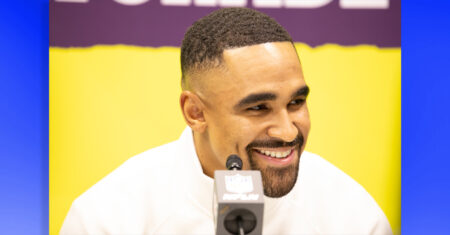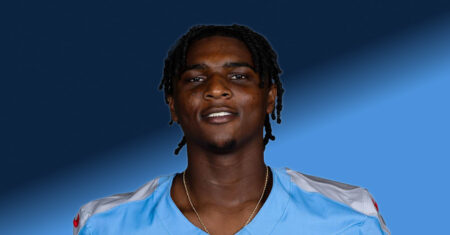Notice: Trying to get property 'post_title' of non-object in /home/ofzfvenynm4q/public_html/wp-content/plugins/wp-rss-feed-to-post/includes/wprss-ftp-display.php on line 109
Former Chicago Bears defensive end Robert Quinn couldn’t wrap his head around it.
Like the national TV audience on Sept. 29, he saw the arresting images of Miami Dolphins quarterback Tua Tagovailoa lying motionless near the 50-yard line with his hands frozen above him in a manner consistent with a brain injury during a game against the Cincinnati Bengals.
Advertisement
And Quinn saw the scene from the week before, when Tagovailoa hit the ground hard on a hit from a Buffalo Bills defender, shook his head slightly, ran several steps and then stumbled to the ground. Tagovailoa returned to that game after the stumble was chalked up to a back injury and then played against the Bengals four days later.
“I don’t see how people didn’t stop it instantly (against the Bills). He’s walking and he just literally collapsed,” Quinn said. “I’m not in the medical field, but I do know when something doesn’t look right. … I hope Tua approaches the situation and handles the situation as it should be handled. I hope he gets everything he deserves and more. To be put in that situation like that, especially dealing with your brain, that’s the one thing you can’t replace.”
Advertisement
Five weeks have passed since the incidents set off an NFL investigation into whether Tagovailoa should have been playing, a rules change to address a gap in the concussion protocol and a series of conversations about where the responsibility lies to protect players’ brain health.
Tagovailoa returned from the concussion protocol to start two weeks ago and enters Sunday’s game against the Chicago Bears at Soldier Field hot off one of his best performances of the season, when he completed 80% of his passes and threw for 382 yards and three touchdowns in a win over the Detroit Lions.
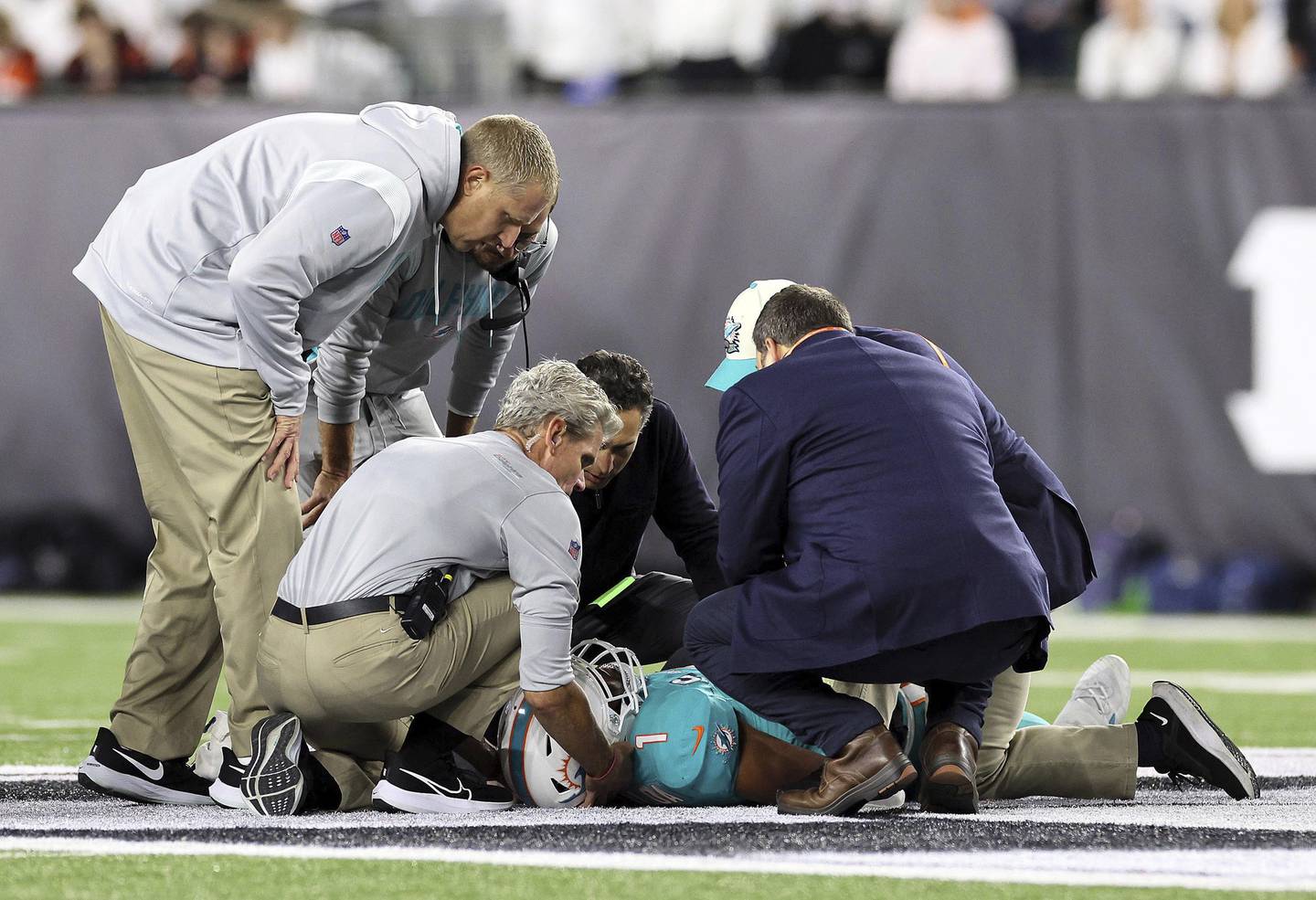
Games have marched on with the colloquially named Tua Rule, a protocol change that forces any player who exhibits ataxia — abnormality of balance or stability, motor coordination or dysfunctional speech caused by a neurological issue — to be removed for the rest of the game.
But the conversation around concussions isn’t going away soon.
In a game in which hits to the head are inevitable and a world in which concussions can be difficult to diagnose even with in-depth protocols, evaluations are sometimes imperfect — in part because they rely on people, including players, with competing internal interests.
“If you personally would rather play a game than worry about your safety, I think that kind of falls on you,” Bears linebacker Nicholas Morrow said. “But at the same token, if a guy is visibly impaired, you’ve got to protect him. There’s a responsibility on both ends. Players, we have to be mindful of how we approach the protocols, but it also has to be executed to the highest efficiency.”
In a 2020 game while playing for the Las Vegas Raiders, Morrow hit his head while trying to tackle Indianapolis Colts wide receiver Michael Pittman. Morrow lay facedown on the field for several moments and was pulled from the game for a concussion evaluation.
He said after he successfully answered a series of questions, the Raiders put him back in the game for the next defensive series.
Advertisement
“They were like, ‘You seem like you’re fine’ and threw me back out there,” Morrow said. “I wasn’t able to focus. I didn’t know the calls or where to line up, and I’m like, ‘Yeah, I can’t do this.’
“I went back to the sideline and told my teammate, ‘I don’t know what’s going on or what just happened, like as far as the play.’ That’s when they got the trainers and got me back to the locker room to get me tested.”
The NFL concussion protocol is 19 pages of rules designed to keep a concussed player from going back into a game or playing the following week and risking further injury to his brain.
In addition to team medical staffs watching for a long list of potential concussion symptoms, there are three unaffiliated neurotrauma consultants at games to spot and diagnose concussions and two booth-certified athletic trainer spotters with access to multiple views and replays to look for players’ medical issues.
NFL Chief Medical Officer Dr. Allen Sills said the unaffiliated consultants are neurosurgeons, neurologists and emergency physicians.
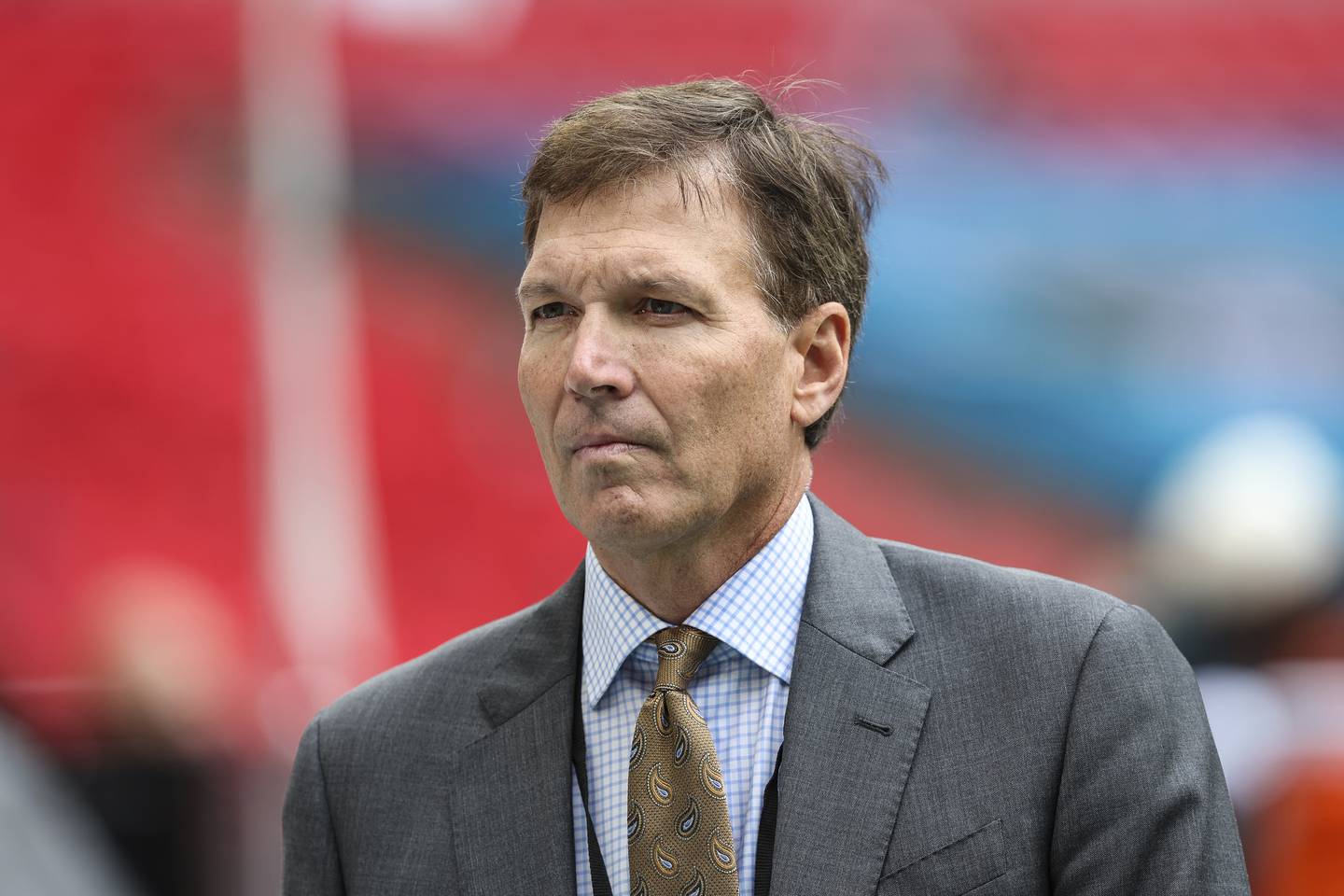
“People you would want taking care of you,” he said.
Advertisement
The sideline-evaluation checklist includes a review of the play, potential symptoms and the “no-go” criteria, which now include ataxia along with loss of consciousness, impact seizure or fencing posture, confusion and amnesia. The Maddocks’ questions — asking about location, game time and situation and previous games — are presented, and staff evaluate the cervical spine, speech, gait, coordination, balance and eye movements.
If a player is deemed to need further assessment in the locker room, that evaluation is even more in-depth, employing memory, concentration, gait and balance tests. Some of the data can be compared with baseline tests taken in the preseason.
Sills said the protocol is intentionally conservative, “meaning we want to always err on the side of pulling players and evaluating them and keeping them out if they may be injured.” He said over the last few years, three to four players evaluated for a concussion are negative for every one that is diagnosed with a concussion.
And yet still there’s a chance a concussed player gets into a game.
“Diagnosing concussion remains difficult,” Sills said. “Even today in 2022, with all of our technology and all the understanding we have, we still have to rely very heavily on patient self-report symptoms. I’ve been a neurosurgeon for over 30 years, and I will tell you that there are some cases where the diagnosis is very easy and straightforward, but there are others where it’s very difficult to make, and we still have a lot to learn about those difficult cases and what is and is not a concussion.”
The major source of outrage around the Tagovailoa situation was the question of whether he should have been playing in the Bengals game given what happened against the Bills.
Advertisement
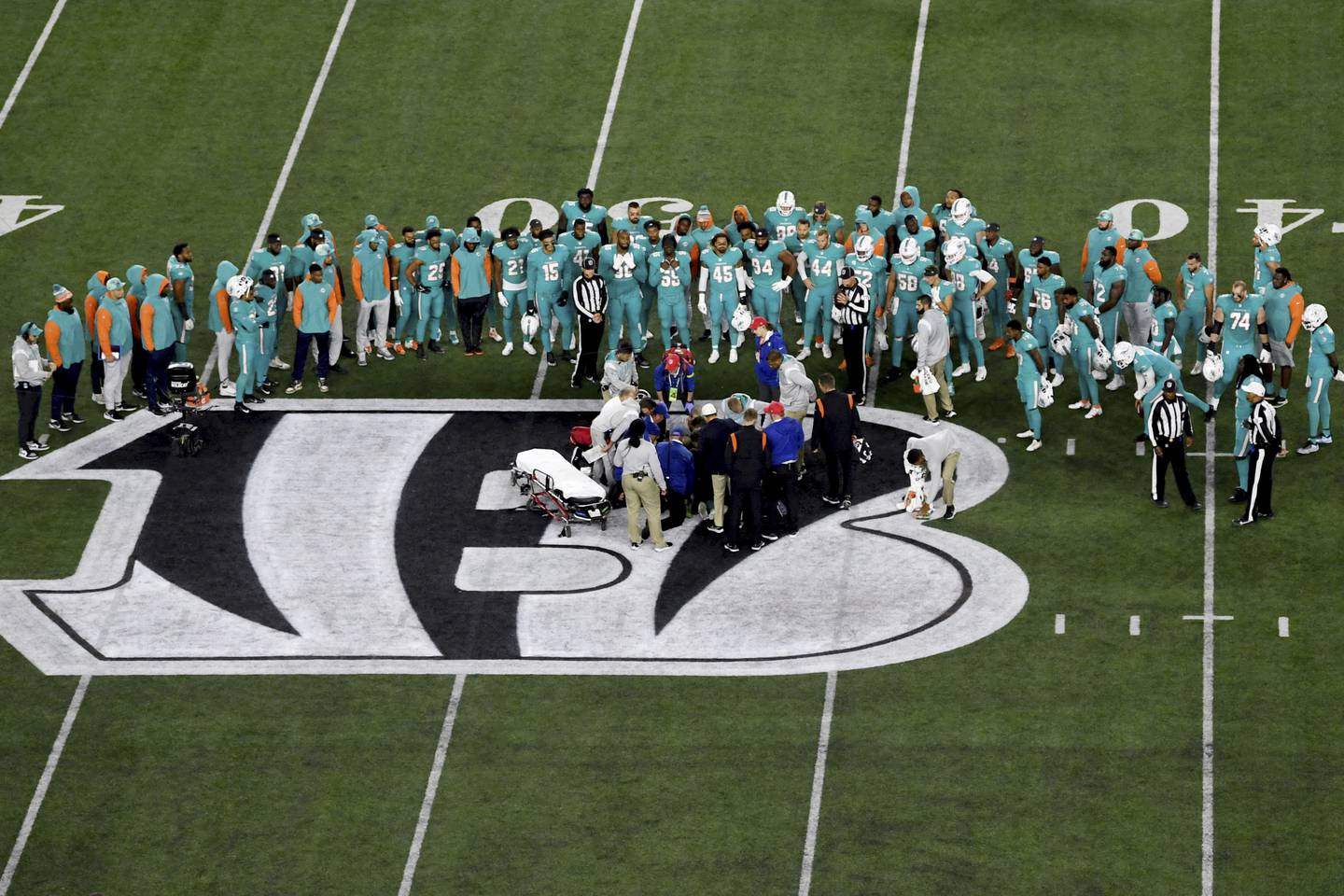
The NFL Players Association fired an unaffiliated neurotrauma consultant that was working that game, and an NFL investigation found that while the protocol was followed, the outcome was not as intended — hence the addition of ataxia to the rules.
Sills said there have been instances in which ataxia has caused players to be pulled from games in the four weeks since the rule was implemented, though it’s still too soon to tell the overall impact of the change.
“We are going to be retired NFL players significantly longer than current NFL players, and I think sometimes people outside of our locker room forget that,” said center Lucas Patrick, who is one of the Bears’ NFLPA reps. “They don’t recognize it. … Any change that’s for the better for us is good because it will help us later in life.”
It wasn’t the first time an incident sparked a rules change.
In 2017, Houston Texans quarterback Tom Savage exhibited the fencing response, as Tagovailoa did, in a game against the San Francisco 49ers and returned to play. The NFL in turn made several protocol adjustments, including making seizures or the fencing response no-go symptoms.
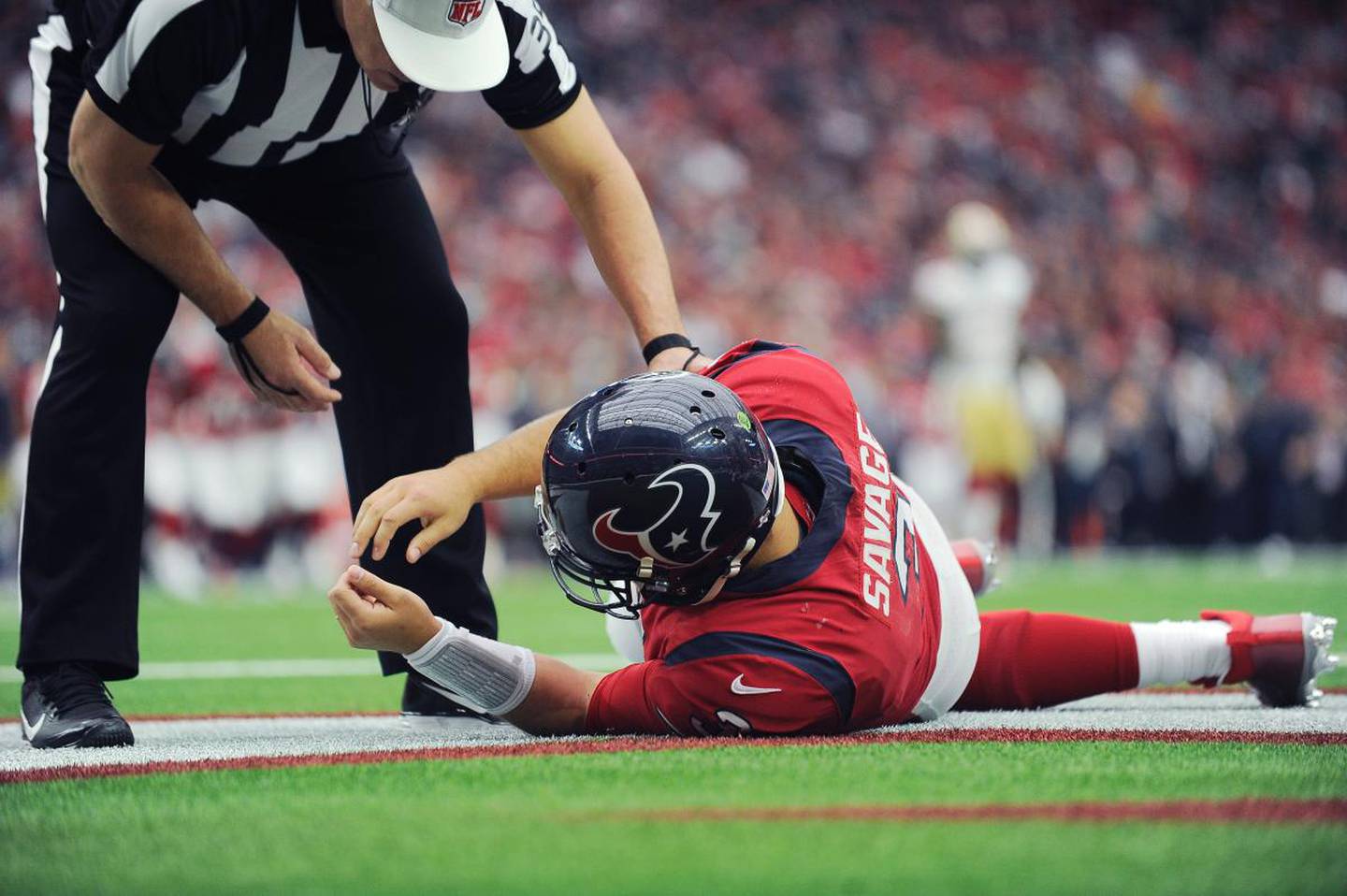
“People get paid to look over that stuff, just like we get paid to play football,” Quinn said. “I don’t see how you let something like (the Tagovailoa situation) slip. For him to go out there and do more damage to himself … that wasn’t healthy for the brain. I don’t how you can throw a man out there like that when you can tell he’s not quite right.”
Advertisement
The situation set off a series of revelations across the league from current and former players about the times they likely played through concussions, including from Bengals quarterback Joe Burrow, former Bears and Broncos wide receiver Brandon Marshall and former Broncos and New York Giants receiver Bennie Fowler.
Some of those conversations centered on whether they should have taken themselves out.
Football’s nature means playing through minor injuries all the time, and there’s a certain culture of pride among players to be able to gut through pain.
Bears quarterback Justin Fields is a poster child for gutsy performances, famously playing through pain after taking a hard hit to his ribs in Ohio State’s win over Clemson in the College Football Playoff semifinal in 2021.

But Fields said last month that “a head injury is different than a physical injury” when it comes to trying to play through it. And he said he is always conscious of avoiding hits to his head.
“At all times you have to think about protecting yourself,” Fields said.
Advertisement
It’s not always that simple.
According to one player who has suffered multiple concussions and requested anonymity, players trying to play through concussions “absolutely” happens. They simply might not be aware they are concussed or might be worried about their contracts, roster spots or just not letting their coaches and teammates down.
“I’d say if you’re a good teammate, you never want a THO, what they call a ‘Take himself out,’” the player said. “It’s always, you hear, ‘They’ve got to drag me off this field because I’m with my brothers out there.’ And while it’s not war — I’m not equating it to war at all — the fact is you want to be out there to have your brother’s back, and that matters more than future problems 10, 20 years down the road.
“To you in the moment, it’s more important to have your brother’s back than to (say), ‘OK, well, how’s my mental health going to be the next decade?’ ”
Quinn agreed: “Most of the time, I think guys will try to play through. If they say, ‘Go,’ I’m pretty sure we’re all going to go out there and go.”
Even Tagovailoa, in a wide-ranging interview with NBC’s Maria Taylor before his return, talked about not wanting to be the face of a rule that forces more players to leave games — even if it’s out of caution.
Advertisement
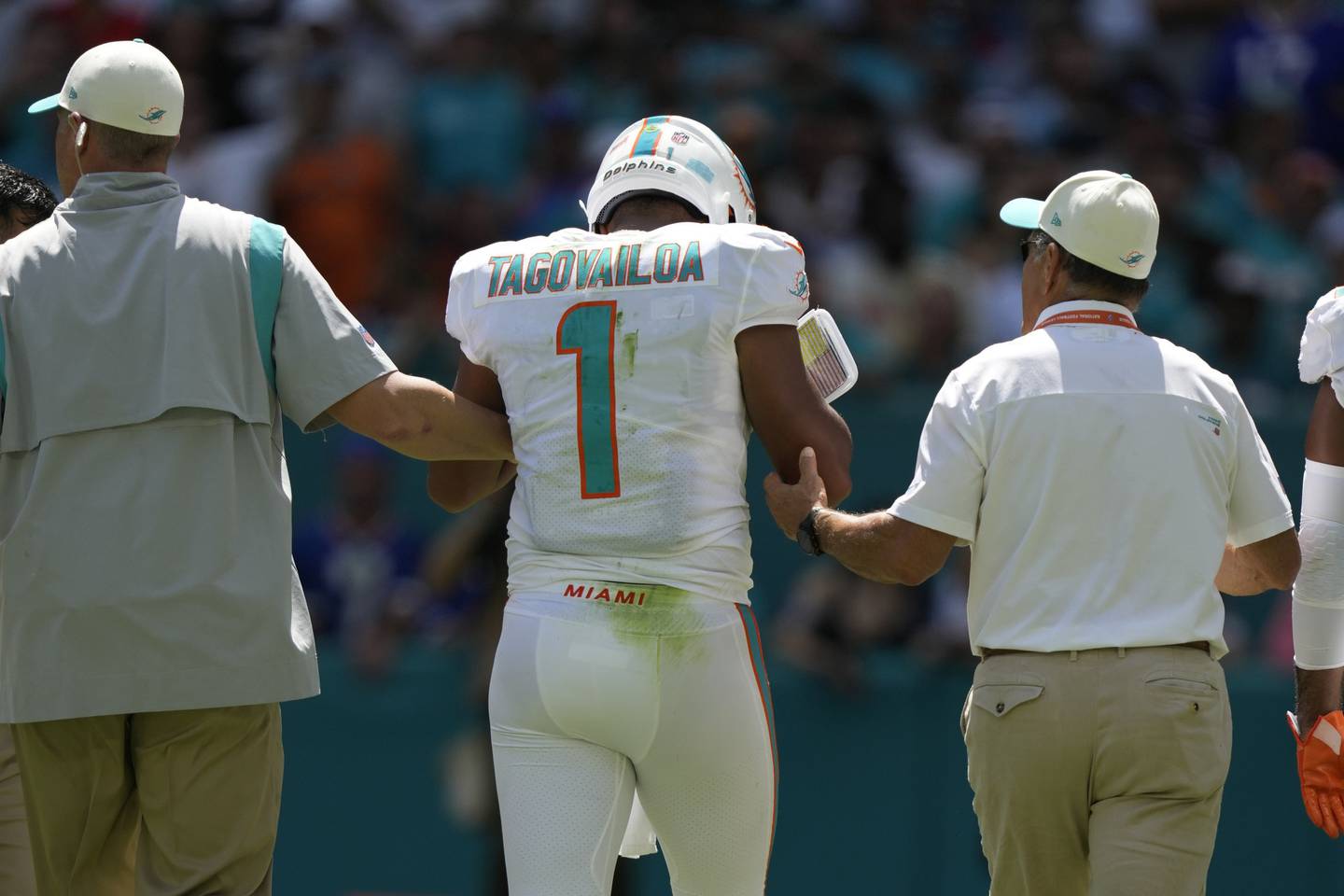
“For me, I’m all for player safety, but when I hear guys saying, ‘Oh, this is the Tua rule’ or ‘This is a rule because of Tua,’ I don’t want to be known as that,” Tagovailoa said. “I don’t want people to label it something I made. Because I didn’t make that. That was just conversations that happened with the NFL and NFLPA. For me, I just want to go out and do good things for my team, help my team win, do whatever I can to help support the guys out there on the field because we only have a short span of our prime, and it’s not long.”
Multiple players said cheating on concussion tests also is a known occurrence, including trying to throw the results of the preseason baseline tests that are compared with the tests after a concussion is suffered.
Sills said the league hopes it doesn’t happen, noting the player-medical staffer relationship has to function the same way a patient-doctor relationship does — with trust and openness.
It’s also unclear how much cheating on a baseline test actually would affect a concussed player’s ability to get back on the field. Sills said there are gating mechanisms within the baseline tests to detect if someone is not putting forth full effort, and he pointed to the numerous other steps medical staff take to diagnose.
But the point is players said it happens.
“People do it. You basically sit in a room (for the baseline test), and they ask you questions based on certain things, and if you lie to make it worse, (then) when you are impaired it doesn’t look like you had that much fall off,” Morrow said. “It’s a personal responsibility. You have a responsibility to yourself. Is football more important than your actual brain health when you’re done playing? The responsibility to your family when you’re done playing? You have to answer that question internally.”
Advertisement
That’s where it comes down to the culture surrounding concussions — among the players, yes, but also the league, coaches and staff.
To play football, a player has to accept the possibility of a concussion.
“Sadly it’s a part of the game,” said right guard Teven Jenkins, who suffered concussions in college and is among the few Bears players to wear the protective Guardian Cap over his helmet during practices. “Hopefully one day we’ll be able to have enough science behind this to help at least limit chances of that severity. Seeing (Tagovailoa’s injury), it’s a little scary. But that’s part of the game, and when we play it, that’s one of the risks we run.”

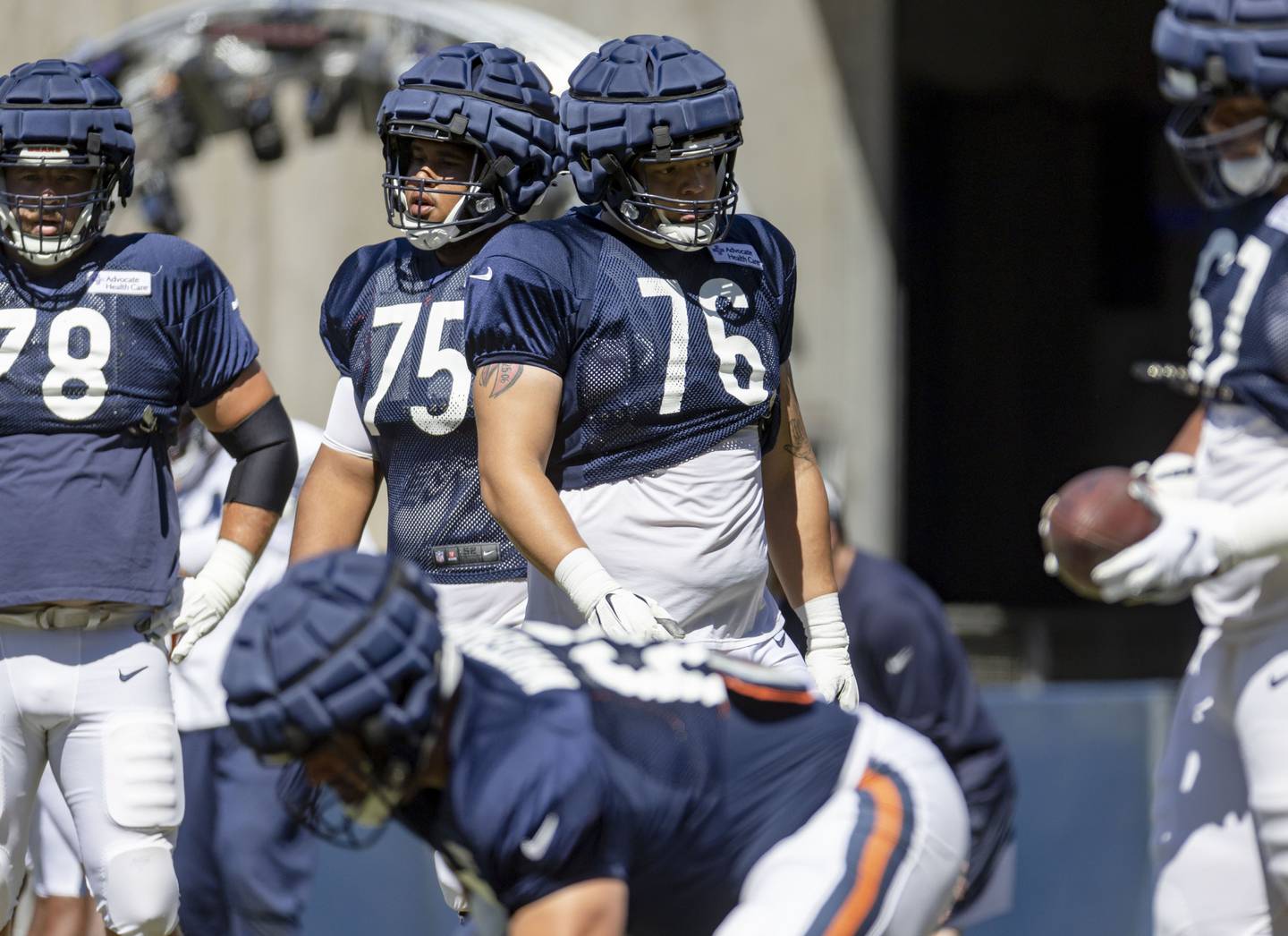
Sills believes the league is seeing a “major culture change,” however, about how players handle it when they are concussed.
Patrick said he thinks more information about brain health is available to the next generation of players, including preseason team meetings about it. Morrow said there’s likely a better understanding among younger players, who come from universities with top-notch training facilities, that their body is their business and they need to protect it.
Last season, nearly 40% of concussions were either self-reported or self-reported in combination with another party, a positive stat from the league’s perspective, Sills said.
Advertisement
“It’s the result of a lot of work on education and awareness on all sides to get to that point,” Sills said. “That’s a major cultural change from where the league would have been a decade or two decades ago, and we think that’s a very positive development.”
Perhaps one day the league will have the technology to make diagnosing concussions more finite, the player said.
Sills said there is active research on diagnosis with blood biomarkers and physiological biomarkers, such as eye-tracking devices, measurements of pupil size and more. The league would like to see some research used on active players, though that would have to be in conjunction with the players association. The NFL has a task force that decides whether such research has reached an evidence level to incorporate it into protocol.
Until then, it’s on the people.
“I think the narrative has been changing,” the player said. “All the meetings we have with the doctors in the preseason and the offseason, they’re pushing, ‘Hey, if you have symptoms, self-report.’ And maybe with the new generation hearing it enough times, they will come through and self-report. I’ve been around for a while. It wasn’t always like that. I guess I’m cut from that cloth.”




